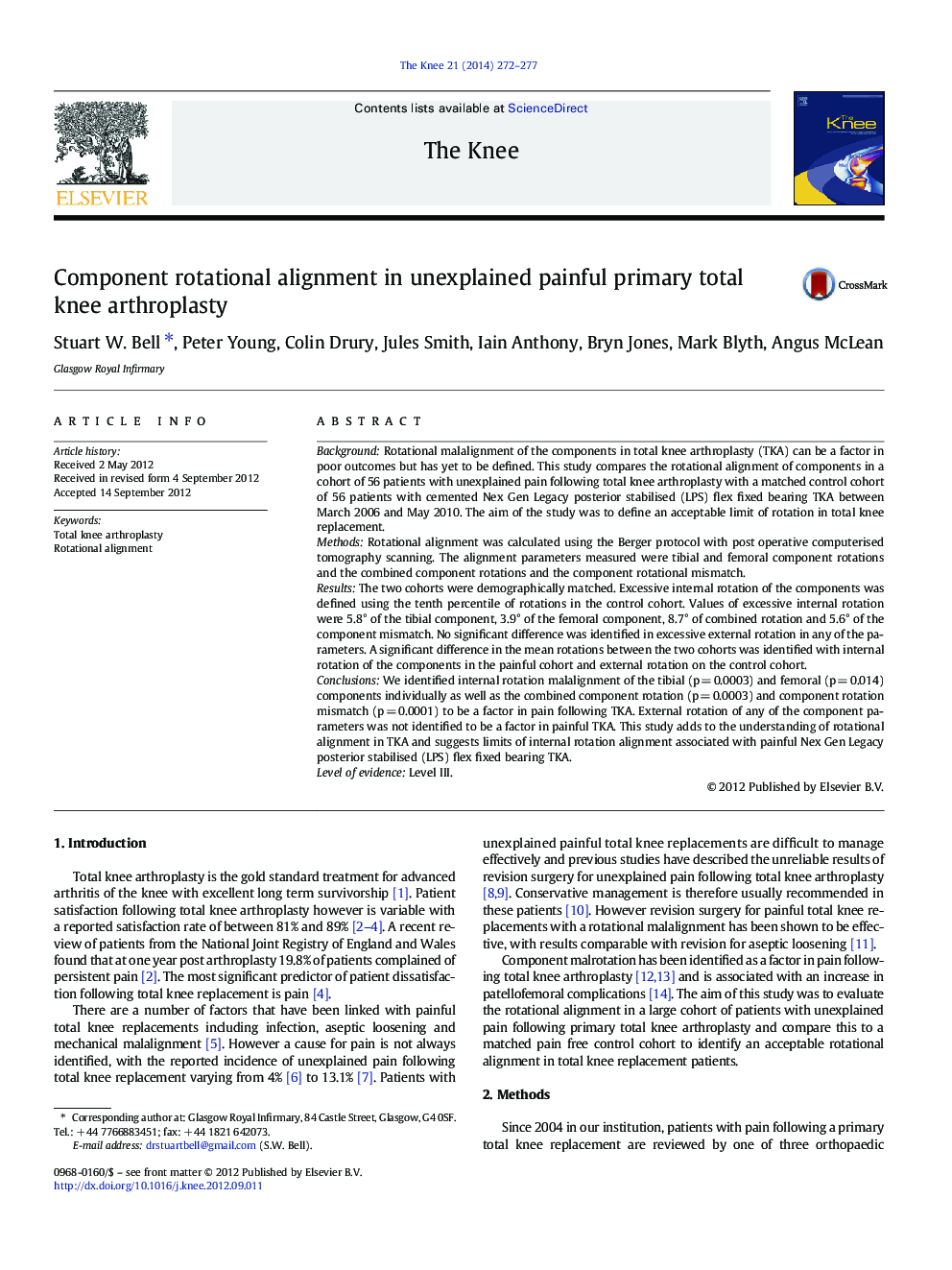| کد مقاله | کد نشریه | سال انتشار | مقاله انگلیسی | نسخه تمام متن |
|---|---|---|---|---|
| 6211271 | 1267212 | 2014 | 6 صفحه PDF | دانلود رایگان |
BackgroundRotational malalignment of the components in total knee arthroplasty (TKA) can be a factor in poor outcomes but has yet to be defined. This study compares the rotational alignment of components in a cohort of 56 patients with unexplained pain following total knee arthroplasty with a matched control cohort of 56 patients with cemented Nex Gen Legacy posterior stabilised (LPS) flex fixed bearing TKA between March 2006 and May 2010. The aim of the study was to define an acceptable limit of rotation in total knee replacement.MethodsRotational alignment was calculated using the Berger protocol with post operative computerised tomography scanning. The alignment parameters measured were tibial and femoral component rotations and the combined component rotations and the component rotational mismatch.ResultsThe two cohorts were demographically matched. Excessive internal rotation of the components was defined using the tenth percentile of rotations in the control cohort. Values of excessive internal rotation were 5.8° of the tibial component, 3.9° of the femoral component, 8.7° of combined rotation and 5.6° of the component mismatch. No significant difference was identified in excessive external rotation in any of the parameters. A significant difference in the mean rotations between the two cohorts was identified with internal rotation of the components in the painful cohort and external rotation on the control cohort.ConclusionsWe identified internal rotation malalignment of the tibial (p = 0.0003) and femoral (p = 0.014) components individually as well as the combined component rotation (p = 0.0003) and component rotation mismatch (p = 0.0001) to be a factor in pain following TKA. External rotation of any of the component parameters was not identified to be a factor in painful TKA. This study adds to the understanding of rotational alignment in TKA and suggests limits of internal rotation alignment associated with painful Nex Gen Legacy posterior stabilised (LPS) flex fixed bearing TKA.Level of evidenceLevel III.
Journal: The Knee - Volume 21, Issue 1, January 2014, Pages 272-277
